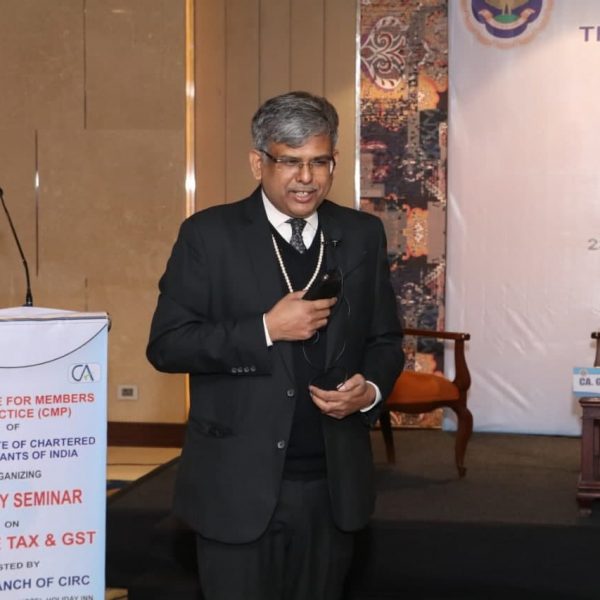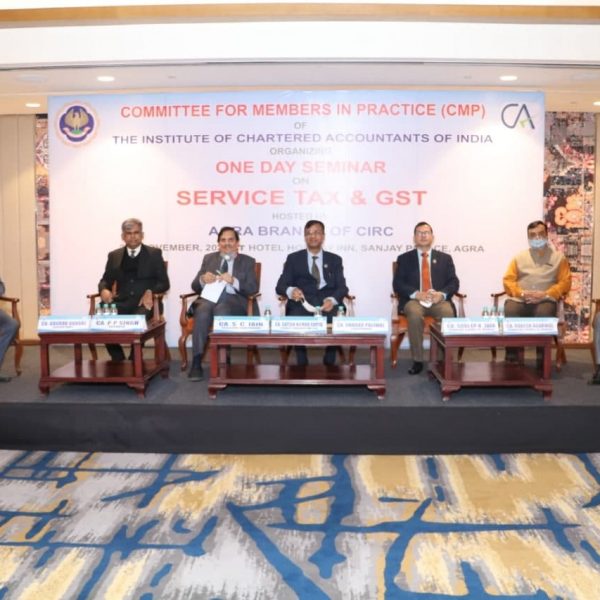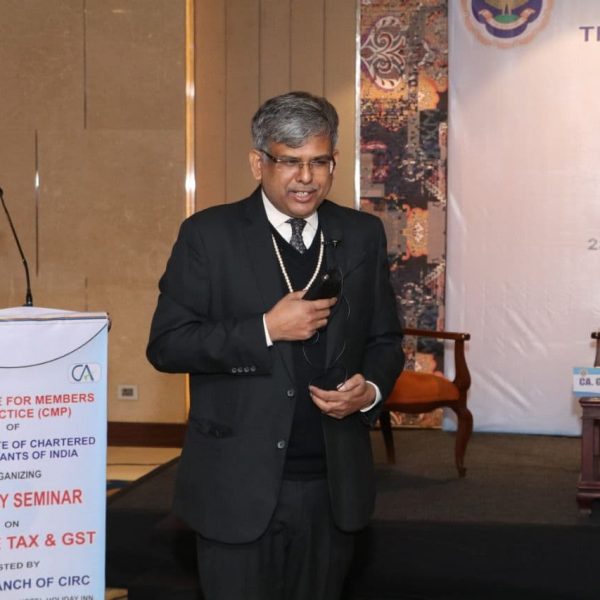Internal Aids to Interpretation of Statutes.
An aid is a valuable tool or device used to assist in interpreting statutes. When interpreting a statute, courts can employ both internal aids (found within the statutes) and external aids (found outside the statutes) to gain a better understanding of its meaning and intent. Here aids within the Statute used for interpretations are explained in detail with the help of leading case laws.
Meaning of Internal Aids to Interpretation of Statutes
Internal aids to the interpretation of Statutes refer to the tools or elements inherent within a statute. These aids allow the court to derive the statute’s meaning without relying on external references.
By examining the content within the statute, such as specific provisions or clauses, it becomes possible to interpret its intended meaning.
The following are examples of internal aids that can assist in the interpretation of a statute:
Titles of Statutes
Within statutes, titles play an essential role in providing reference and a general understanding of the purpose of the legislation. There are two types of titles commonly used:
Short Title
The short title of an Act serves as a concise name given to the legislation for easy reference and identification. It is typically stated in Section 1 of the Act and includes the year of its enactment.
For example, Section 1 of the Code of Civil Procedure (CPC) states, “This Act may be cited as the Code of Civil Procedure, 1908.” Similarly, Section 1 of the Indian Contract Act states, “This Act may be called the Indian Contract Act, 1872.”
The short title is a convenient way to refer to the Act without mentioning its full name and details.
Long Title – SoP (Scope, object, Purpose)
The long title is included in certain acts to provide a general description of the objective or purpose of the legislation. It offers an overview of the intended scope and purpose of the Act. However, it is important to note that the long title is not considered a conclusive aid for interpreting statutes.
It does not resolve ambiguities that may arise within the statutory provisions but rather provides a broad understanding of the subject matter of the Act’s.
For instance, the long title of the Criminal Procedure Code (CrPC) states, “An act to consolidate and amend the laws relating to the criminal procedure.” Similarly, the long title of the Code of Civil Procedure (CPC) states, “An act to consolidate and amend the laws relating to the procedure of the courts of civil judicature.”
While the long title provides a general idea of the purpose of the Act , it should not be solely relied upon for interpretation when specific provisions and other internal aids are available.
Preamble
The preamble of an Act serves as an internal aid to interpretation as it outlines the main objectives and reasons behind the legislation. When the language of a provision within an Act is clear and unambiguous, the preamble generally does not play a significant role. However, if multiple interpretations are possible, the preamble can assist in ascertaining the true meaning of the provision.
The preamble is typically located on the first page of the Act, although it is worth noting that modern acts are often drafted without a preamble, diminishing its importance.
In the case of State of West Bengal v. Anwar Ali, the constitutionality of Section 5 of the West Bengal Special Courts Act, 1950 was challenged on the grounds of violating Article 14 of the Constitution. This provision empowered the state government to select specific cases to be tried by special courts with distinct procedures. The Supreme Court referred to the preamble of the Act which is Starting as “ where it is expedient to provide for the speedier trial of Certain offences ………” and accordingly determined that the state government had the discretion to choose such cases where special Court may adopt special trial Procedure for speedier trial and therefore particular provision was perfectly legitimate and Constitutional and not violative of Article 14 .
Marginal Notes/ Side notes
Marginal notes, or side notes, are brief explanations placed at the side of sections within an Act. Such notes express the effect of section’s but generally such notes do not form a part of the statute.
Marginal notes may form part of Statute such as the constitution of India where marginal notes were inserted by the constituent assembly and therefore while interpreting the Indian Constitution, it is always Permissible to seek guidance and help from marginal notes. But in most of the statute no marginal notes or marginal notes do not form part of the statute, in such cases it is not of much value for interpretation.
Earlier marginal notes were considered for interpretation when the clear meaning of a provision was uncertain. However, according to the modern view of the court, marginal notes do not play a significant role as legislators neither insert them nor are they part of the statute itself. Nevertheless, marginal notes are occasionally referred to while interpreting the constitution, because the constituent assembly creates them.While marginal notes may have limited significance in the interpretation of statutes, they can still offer valuable context in interpreting constitutional provisions.
Case laws:
In the case of Bengal Immunity Company v. State of Bihar, the Supreme Court by a majority decision held that the marginal notes of Article 286, which is “ restrictions on the imposition of taxes on the sale or purchase of goods”, was to address taxation by multiple states on Same transaction considered as part of the Constitution of India. Therefore, they could be relied upon to provide insights into the purpose and meaning of the article. However, the minority view was that marginal notes to A-286 can’t be referred for Construction or interpretation.
Tara Prasad singh Vs. Union of india (1980)(SC)
Hon’ble Supreme Court held that marginal notes to the section of a statute and title of chapter can’t take away the effect of the express provision contained in the Act. one must regard the object of an Act in order to find out whether exercise of legislative power is purposive.
- P Gupta Vs. President of indie (1982)(SC)
SP Gupta vs Union of India, also known as the “Judges’ Transfer Case” (1981), was a landmark legal case in India. The main issue revolved around the constitutional validity of the Central Government’s orders regarding the non-extension of an additional judge’s term and their transfer. The majority decision, by a 5:2 ratio, upheld the validity of these actions. Justice Bhagwati recommended the establishment of a collegium to recommend judicial appointments to the President, while Justice Pathak and Tulzapukar emphasized the Chief Justice of India’s opinion in such matters.
The court in this case emphasized that ‘consultation’ meant full and effective deliberation and that disclosure of government correspondence should occur unless it negatively affects public interest. This case played a pivotal role in shaping India’s judicial landscape by addressing issues related to judicial appointments, transparency and the accountability of the government to the public.
It was also argued that communication with the president is privileged Communication under Article 74(2) and Can’t be disclosed to which court rejected and held that Communication between the President & chief justice of India or High court is not advice of council of ministers to the President therefore not a privileged communication.
Regarding Shield of unpublished documents not being treated as evidence under Section 123 of the Indian Evidence Act, 1872, the Court referred to the precedent set in the case of State of UP v. Raj Narain (1975). In that case, the Court upheld the High Court’s decision to treat unpublished documents as admissible evidence.
If there is any ambiguity in the meaning of provision in the body of the Statute, marginal notes may be looked into as an aid to Construction. However if express provision is unambiguous and Contrary to the marginal notes then marginal notes has to yield ( = to obey somebody else )
Headings
Headings are prefixed to sections or groups of sections within a statute. Courts have treated these headings as preambles to the corresponding sections or sets of sections. However, it is important to note that headings cannot control the plain words of the provision of the statute . Headings may serve as internal aids to interpretation of statutes but their role is limited to cases where the plain reading of the section allows for more than one interpretation. In such situations, the court may seek guidance from the headings to understand the legislative intent.
case laws:
Bhinka vs charan Singh 1959 SC
In this case appellant was tenant and respondent was landlord, respondent sought to evict the appellant under section 180 of the UP Tenancy Act 1939. Heading of Section 180 was “ Ejectment of a person occupying land without title” and section 180 was “ A person taking or retaining possession of a plot of land without consent of the person entitled to admit him and otherwise than in accordance with Provisions of law for the time being in force Shall be liable to ejectment ” since the tenant was in possession under an order under section 145 of Cr. Procedure code,1898 therefore no case of eject in section 180.
M/S Prick India Limited Vs. Union of India (1990) (SC)
While interpreting provisions of Central excise and Salt Act, 1944 ,Hon’ble Supreme Court held that heading prefixed to a section or entries can’t control the plain words of Provisions which is clear & unambiguous nor cut down the plain meaning of the words used in provisions. only in the case of doubt headings or subheadings may be used as an aid to interpretation . In this case parts of air-conditioning or refrigerating appliances are subject to duty irrespective of whether the manufacturer supplies as a complete unit of air-conditioning or refrigerating appliances or not
Illustrations/ examples
Illustrations are appended in various sections of statute as an example to explain the provision of law. They manifest the legislature’s intention and can be referred to in cases of ambiguity or repugnancy. However, it is emphasized through various judgments that illustrations do not explain the entire principle contained in the section, nor do they limit the scope of the section. In case of a conflict between the section and an illustration, the section will prevail.
For example, Section 378 of the Indian Penal Code (IPC) has 16 illustrations.
case laws:
Mahesh chand sharma Vs. Raj Kumari Sharma (1996)( SC)
It was held that illustration is a part of section and it helps to elucidate the principle of section, however Illustrations can’t be used to defeat the provisions or to modify the language of section. This is based on a maxim ” example IIustruant non-restringent legem”. Meaning thereby example only Illustrate but does not narrow down the Scope of rule of law.
muralidhar chatterjee Us. International film co. 1943 PC
It was observed that in constructing a section, an Illustration can’t be ignored or brushed aside. under the Contract Act a party who has “put an end to” a contract Under Section 39 is liable to restore any benefit received by him under the contract from another party. The aggrieved party may, after putting an end to the contract, bring an action for damages for breach, but he will be bound under Section 64 to restore to the other party the benefits he might have received under the contract.
note : As per section 39 “Agreements, the meaning of which is not certain, or not capable of being made certain, are void.”
Explanations
Explanations are inserted in statutes to clarify the meaning of a particular provision and to remove any doubts that might arise if the explanation had not been included. The purpose of explanations is to explain the meaning and intention of the Act, to clarify obscurities or vagueness and to provide additional support to the objective of the Act.
Hence, explanations also serve as internal aids to interpretation of statutes.
However, explanations do not expand or curtail the provision’s meaning; they only aim to remove uncertainty. The court must harmonize the two in case of a conflict between an explanation and the main section.
For example, Section 108 of the IPC defines the word “abettor,” which has five explanations attached. various explanations in the income Tax Act 1961.
Definition or Interpretation Clause
Definition or interpretation clauses in statutes define certain words used throughout the statute to avoid the need for repetitive descriptions and to extend the natural meaning of some words as per the statute’s intention. These clauses also clarify the legislature’s intention regarding using specific words in the statute and help avoid confusion.
The rule of interpretation regarding definition clauses is that when the words “means” or “means and includes” are used, the definition is exhaustive and does not allow for a wider interpretation. However, if the word “includes” is used, it provides the broadest possible interpretation or enlarges the world’s ordinary meaning.
However, if applying the definition clause would lead to an absurd result, the court will not apply such definitions. Additionally, the definition clause of one statute cannot be used to explain the same word used in another statute, except in cases of statutes are pari materia (related subjects) or Statutes has specifically mentioned to derive meaning from Specific statute or meaning from general clause Act .
In the case of Mahalaxmi Oils Mills v. State of A.P., the interpretation of the word “tobacco” was in question. The definition states that tobacco includes any form of tobacco, whether cured or uncured, manufactured or not, and leaf stalks and stems of the tobacco plant. The Supreme Court held that the definition was exhaustive and refused to include tobacco seeds within the definition of tobacco.
Punctuation
In earlier times, statutes were passed without punctuation but in modern times, statutes are passed with punctuation such as colons, semicolons, commas, full stops, dashes, hyphens, brackets and more..
The rule of interpretation regarding punctuated provisions is that if the court encounters repugnancy or ambiguity while interpreting a provision with punctuation, the court should read the provision as a whole without attaching any significance to the punctuation. If the meaning is clear, it should be interpreted accordingly.
case laws
Aswini kumar Vs. Arabinda Bose ( 1952) (SC)
The Supreme Court held that a punctuation can’t be regarded as a controlling element and can’t be allowed to control the plain meaning of a text.
Mohamad Sabbir Vs state of maharashtra (1979) ( SC)
As per section 27 of the Drug and Cosmetic bet 1940 “ whosoever manufactures for sale, stock or exhibit for sale or distribute drugs without licence would be Punishable. ”Hon’ble Supreme Court held that mere stocking of drugs is not an offence but stocking for Sale is an offence and requires Licenses because there is no comma after word stocks which means stock or exhibit are both qualified for sale used thereafter.
conjunctive or Disjunctive word
or/ and departure from natural meaning can be made where Context otherwise Justified or makes necessary.
Schedules
Schedules are included at the end of statutes and provide additional details, prescribe forms and contain subjects in lists. In case of a conflict between the schedule and the main body of an act, the main body prevails. So, Schedules help in internal aid to interpretation.
For example, Article 1 of the constitution states that India shall be a union of states, and Schedule 1 contains the names of the states along with their territories.
Saving Clauses
Saving clauses are typically appended in cases of repeal and reenactment of statutes for example repeal of various Acts of old indirect taxation such as VAT, central excise except entry no.84, Medicinal and Toilet Preparations (Excise Duties) Act, 1955, the Additional Duties of Excise (Goods of Special Importance) Act, 1957, the Additional Duties of Excise (Textiles and Textile Articles) Act, 1978, and the Central Excise Tariff Act, 1985, finance Act1994 (service tax) ,entry tax, entertainment tax and enactment of CGST/ SGST. For example section 174 of the CGST/ SGST Act has repeal and saving clauses. They are inserted in the repealing statute to ensure that rights and liabilities already established under the repealed enactment are not disturbed, and new rights or liabilities are not created in the new enactment . All the proceedings , notice , demand under old law Shall continue and remain Valid. in In case of a conflict between the main part of a statute and a saving clause, the saving clause is rejected.
case laws:
shah Bhojraj kunverji oil mills.Vs. Subhash chandra yograj sinha (1961) (SC) Hon’ble Supreme Court has not allowed the use of saving clause, which was enacted like a proviso, to determine whether a section in an Act was retrospective in operation.
Provisos
A proviso to a section is presumed to be part of the section and is an internal aid to the interpretation of statute. Proviso is to qualify or exempt from general Provisions in certain Situations or to impose mandatory conditions to be fulfilled for the enactment to be workable, or to create exceptions from the main proviso, serve as optional addenda or become an integral part of the enactment.
The rule of interpretation regarding provisos is that they are not independent of the main provision of the section ,they cannot nullify the main enactment’s implications nor expand its scope. but it must be harmoniously read with main provisions of Section. Proviso deals with specific Situations whereas general provisions of section deals with general Case . They must be harmoniously construed in case of a conflict between the main enactment and a proviso. However, some jurists argue that the proviso prevails as it represents the legislature’s latest intention and Specific Situation.
Exceptions
Exceptions are included in statutes to exempt certain matters that would otherwise fall within the scope of the main provision. The latter should be relied upon in case of a conflict between an exception and the main enactment. However, in many cases, exceptions are considered the last intention of the legislature and may be given aid in the interpretation of statutes.
For example, Section 300 of the IPC has five exceptions attached to it. section 499 of IPC which defines defamation has 10 exceptions.
When interpreting statutes, it is crucial to consider punctuation, schedules, saving clauses, provisos and exceptions in conjunction with other relevant factors to determine the legislative intent and give effect to the law.
case laws:
Director of Secondary Education Vs. Pushpendra Kumar (1998)(SC)
Hon’ble supreme court held that a provisions in the nature of exception can’t be so interpreted as to Sub-serve the mains enactment and thereby nullify the right conferred by the main enactment.
Collector of custom Vs. Modi Rubber Ltd (2000) (SC)
Supreme courts held that whenever there is a provision in the nature of exception to the principal clause thereof, it must be construed with regard to that principle clause.
Difference between Proviso and Exceptions
The main difference between a proviso and an exception lies in their functions within a statute.
Proviso:
- A proviso is a provision that follows the main enactment or section.
- It serves multiple purposes, including exemption, qualification, mandatory conditions or optional addenda to the main provision.
- A proviso can modify or alter the operation of the main enactment.
- It is closely connected to and governs the main provision, providing additional conditions or limitations.
- A proviso is integral to the enactment and must be read and understood in conjunction with the main provision.
Exception:
- An exception is a provision that exempts certain things or cases from the scope of the main enactment.
- It operates independently of the main provision.
- An exception creates a carve-out or exclusion from the general rule stated in the main provision.
- It sets specific circumstances or situations that will not be subject to the main provision.
- Exceptions are generally self-contained and do not directly impact the interpretation or application of the main provision.
Fiction/ deeming fiction
fiction is a legal assumption in Certain cases where law provides for irrespective of actual facts or happening of events . It is created for some definite Purpose and therefore Legal fiction enacted for Specific Purpose of a statute can’t be extended to cover another Act. For example if a person has more than two houses, and house property remains vacant even then deemed rent based on fair rent Shall be taxable in the hands of owners even if no rent actually received or receivable by the owner.
Similarly in the case of transfer of a capital asset being land or building transferred at a price less than Circle rate for payments of Stamp duty not exceeding 10% , Stamp duty value shall be deemed to be the Sale consideration for computation Capital gain. Not only that the buyer Shall be liable to Pay tax on deemed income on Stamp duty value less Purchase consideration u/s 56.
Conclusion
Internal aids to interpretation of statutes include examining titles, preambles, headings, illustrations, explanations or definition clauses; internal aids offer insights into the context, scope and application of statutory provisions. it is an and to interpretation within the statute itself.










